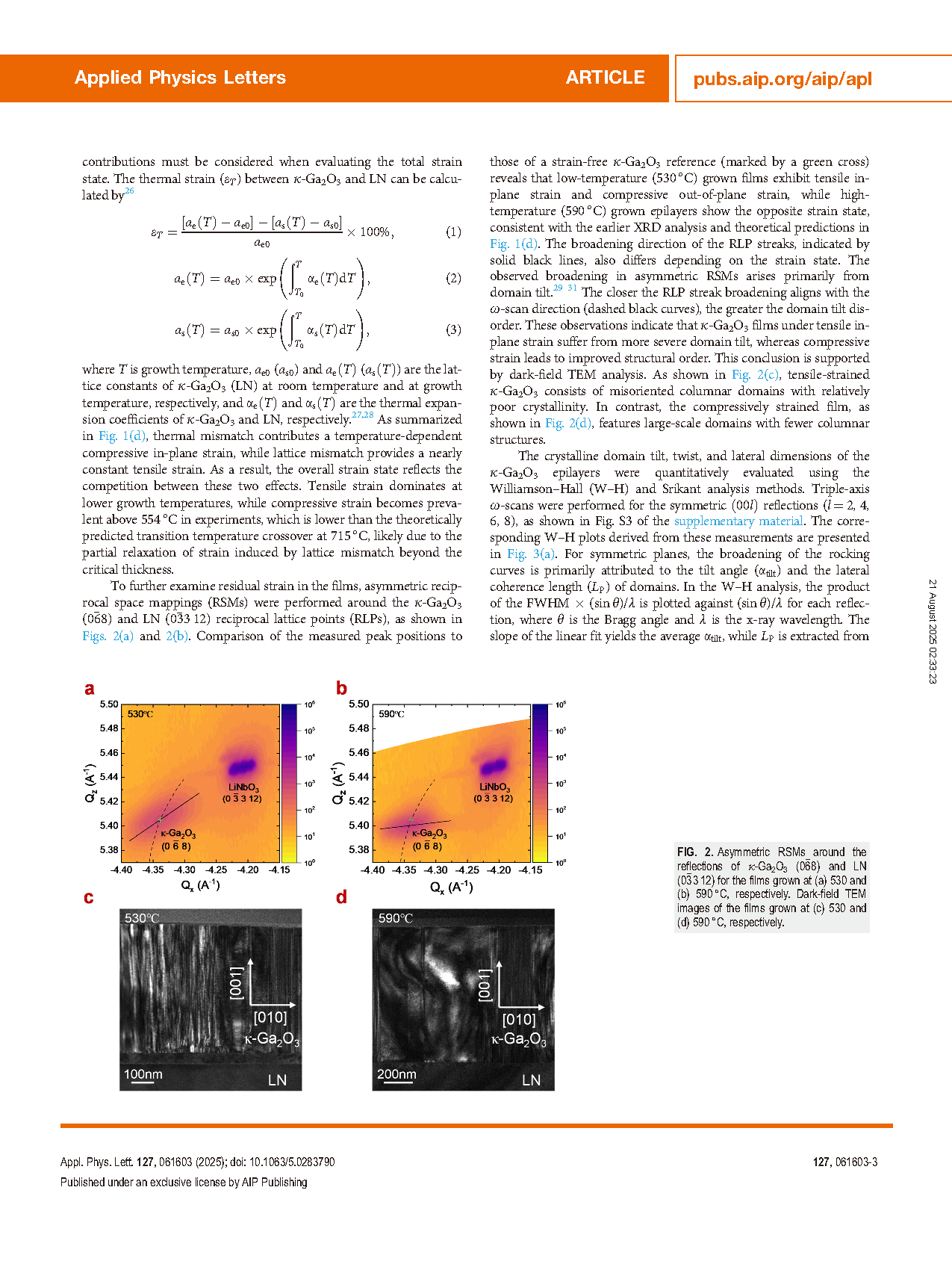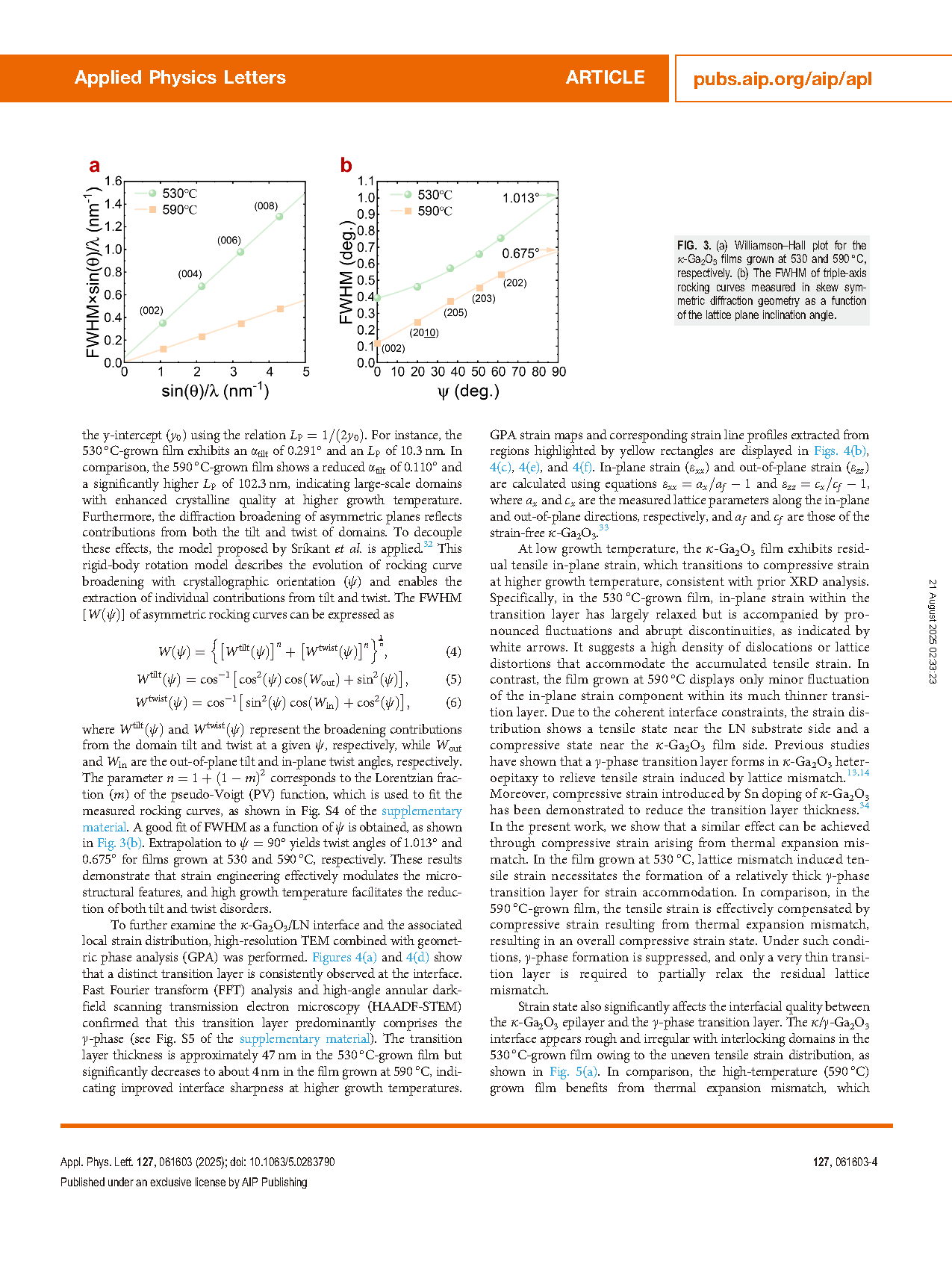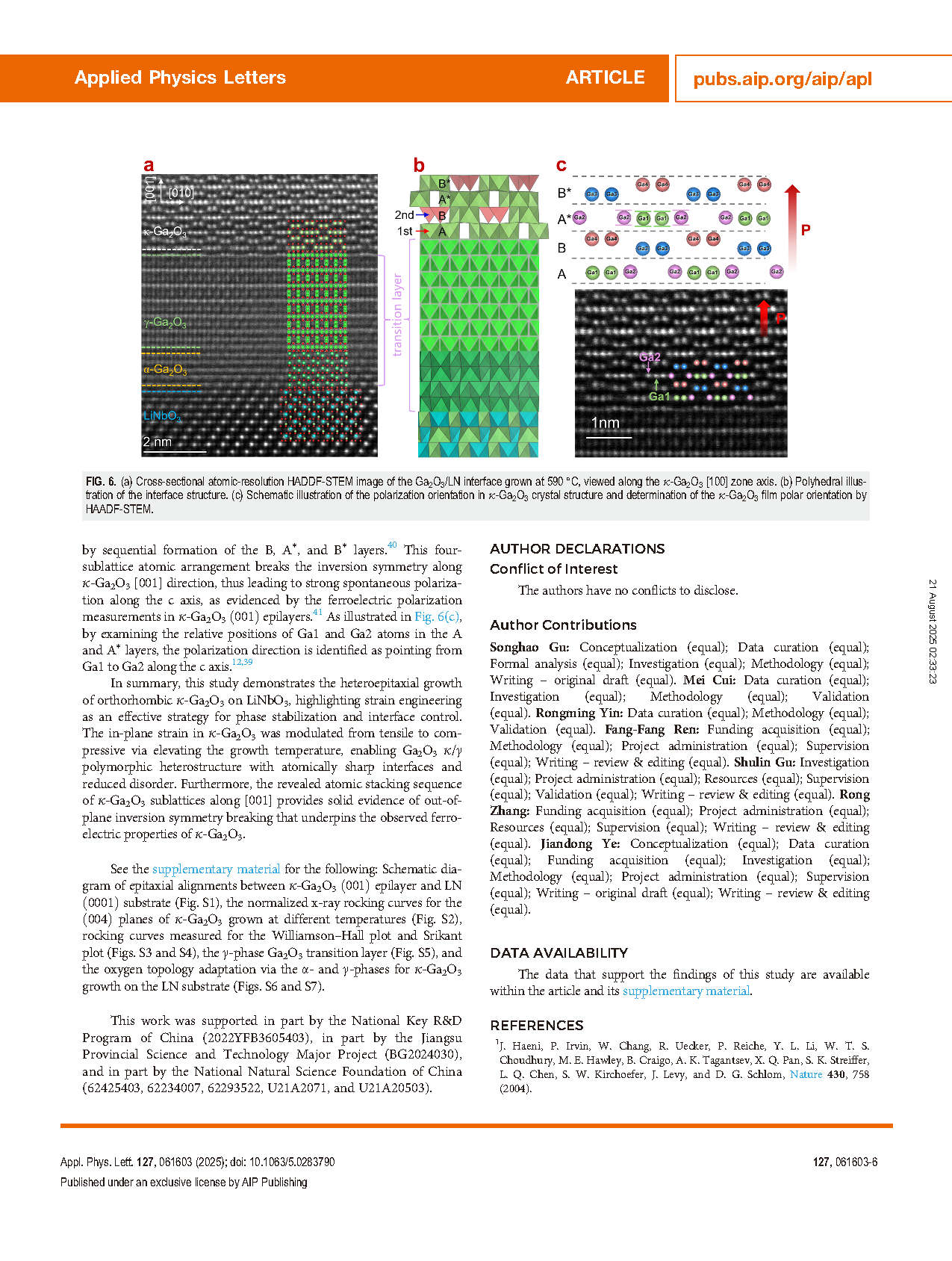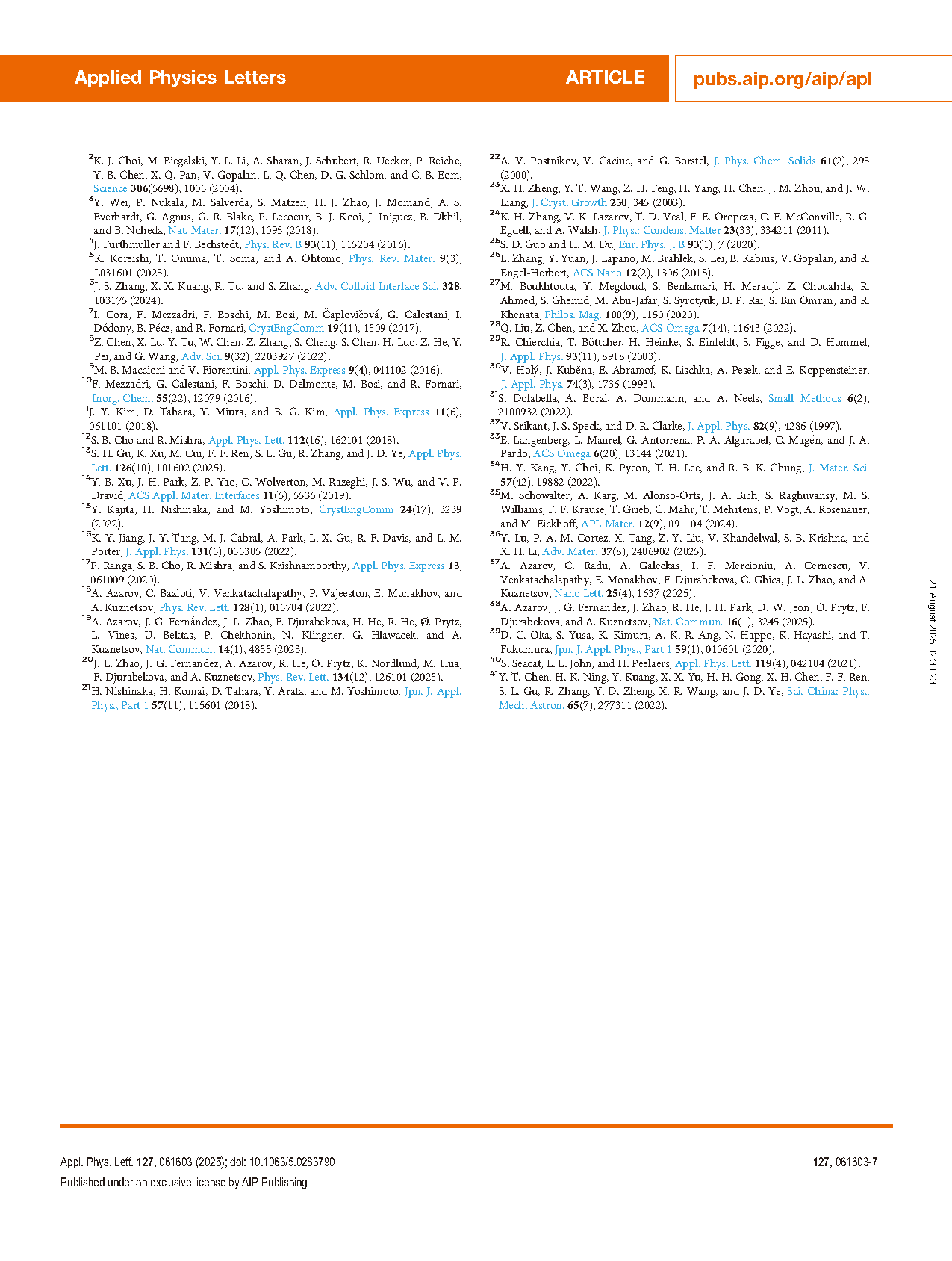
【Domestic Papers】Phase engineering of κ-Ga₂O₃ heteroepitaxy on LiNbO₃ by strain competition effect
日期:2025-08-22阅读:133
Researchers from the Nanjing University have published a dissertation titled "Phase engineering of κ-Ga2O3 heteroepitaxy on LiNbO3 by strain competition effect" in Applied Physics Letters.
Project Support
This work was supported in part by the National Key R&D Program of China (2022YFB3605403), in part by the Jiangsu Provincial Science and Technology Major Project (BG2024030), and in part by the National Natural Science Foundation of China (62425403, 62234007, 62293522, U21A2071, and U21A20503).
Background
Phase engineering through strain modulation has emerged as a pivotal strategy in materials science, enabling precise control over crystal phase stability and material functionalities. For instance, in transition metal oxides such as Hf0.5Zr0.5O2 and SrTiO3, strain modulation enables reversible switching between ferroelectric and paraelectric phases. Particularly in heteroepitaxial systems, the inherent lattice mismatch and thermal expansion differences between the epilayer and substrate inevitably introduce strain, providing an additional degree of freedom for phase engineering. This strain-induced tunability is especially significant in gallium oxide (Ga2O3), a functional oxide that exists in multiple polymorphic phases: β、κ、α、γ 和 δ-Ga2O3. Among these, only the β-phase is thermodynamically stable, while the other metastable phases can be stabilized only as thin films through heteroepitaxial growth, which inevitably introduces misfit strain at the interface.
Abstract
Phase engineering through strain modulation has emerged as an effective strategy for tailoring the properties of polymorphic oxide semiconductors. This study demonstrates the heteroepitaxial growth of orthorhombic κ-Ga2O3 on LiNbO3, focusing on phase engineering via strain competition between thermal expansion and lattice mismatch. By varying the growth temperature from 510 to 590 °C, the in-plane strain in κ-Ga2O3 was tuned from tensile (+0.16%) to compressive (−0.17%). High-resolution x-ray diffraction and transmission electron microscopy revealed that elevated temperatures induce compressive strain, suppressing the formation of a thick γ-Ga2O3 transition layer and enabling atomically sharp interfaces between the κ- and γ-Ga2O3. This strain engineering significantly improves film crystallinity, reduces domain twisting disorder, and improves interfacial quality. Atomic-scale analyses via high-angle annular dark-field scanning transmission electron microscopy confirmed the stacking sequences (A–B–A*–B*) and the out-of-plane inversion symmetry breaking along κ-Ga2O3 [001], establishing the structural origin of its ferroelectric polarization and laying the groundwork for polarization engineering in future ferroelectric device applications.
Conclusion
In summary, this study demonstrates the heteroepitaxial growth of orthorhombic κ-Ga2O3 on LiNbO3, highlighting strain engineering as an effective strategy for phase stabilization and interface control. The in-plane strain in κ-Ga2O3 was modulated from tensile to com pressive via elevating the growth temperature, enabling Ga2O3 κ/γ polymorphic heterostructure with atomically sharp interfaces and reduced disorder. Furthermore, the revealed atomic stacking sequence of κ-Ga2O3 sublattices along [001] provides solid evidence of out-of-plane inversion symmetry breaking that underpins the observed ferro electric properties of κ-Ga2O3.

FIG. 1. (a) XRD 2θ–x patterns of κ-Ga2O3 epilayers grown on LN (0001) substrates at different temperatures. (b) Extracted strain values and FWHM of rocking curves as functions of growth temperature. (c) XRD ω-scans of κ-Ga2O3 (0-68)and LN(0-3312) planes. (d) Temperature-dependent thermal expansion coefficients of κ-Ga2O3 and LN,and calculated total strain and individual components induced by thermal mismatch and lattice mismatch. Experimental data extracted from (b) are also shown in (d) for direct comparison.
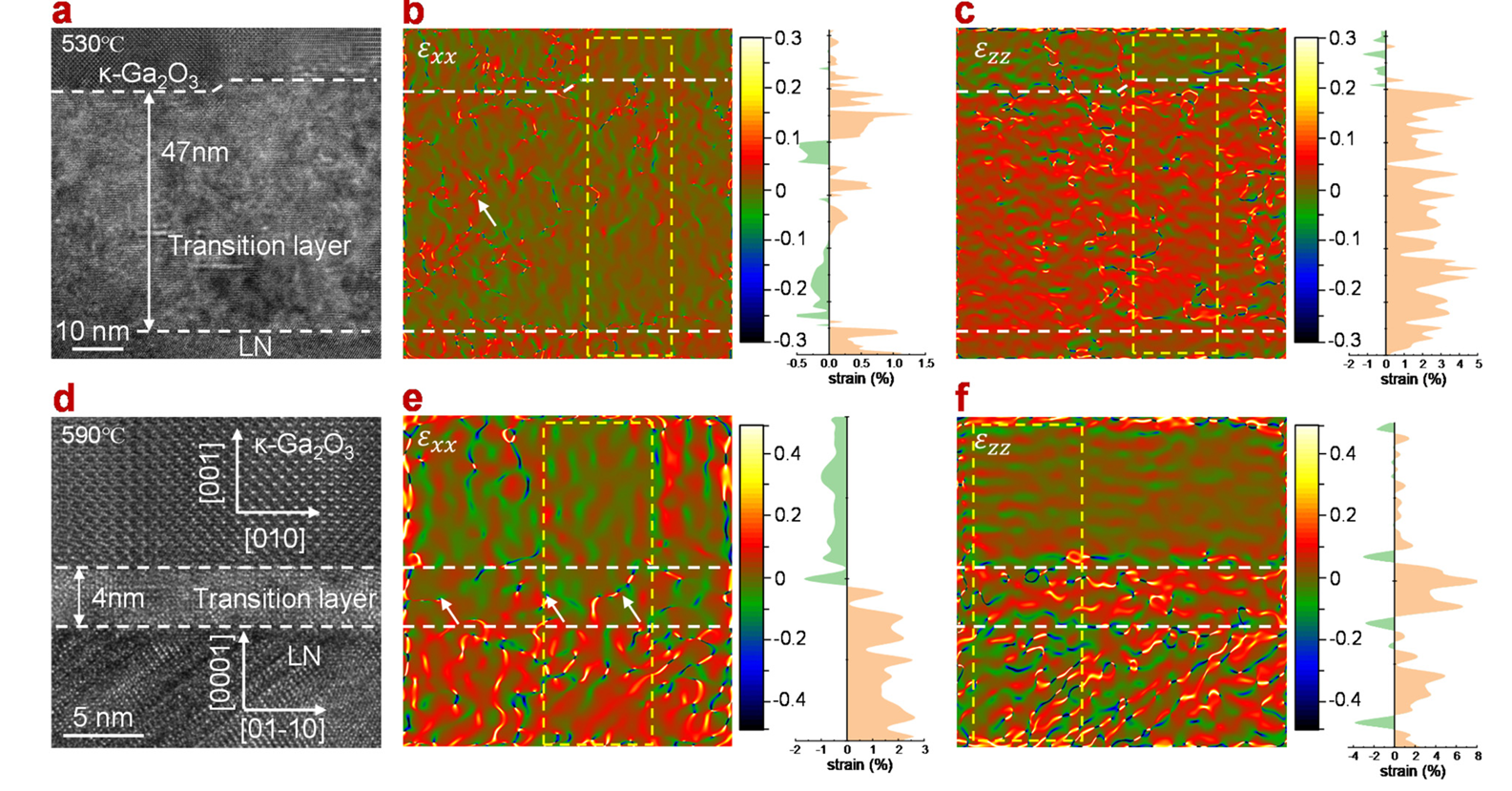
FIG. 2. Cross-sectional HRTEM images and GPA maps of epitaxial κ-Ga2O3 films at (a)–(c) 530 and (d)–(f) 590 C, respectively. (b) and (e) display strain fields of in-plane
strain exx, and (c) and (f) strain fields of out-of-plane strain ezz.
DOI:
doi.org/10.1063/5.0283790


